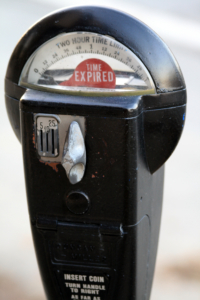In the post-Covid workplace or job, particularly in states such as California where there is a heavy technology industry, it is expected that remote work and hybrid workplace injuries will become more common as the economy readjusts.
When an employee is injured while working from home, issues such as AOE/COE become complicated very quickly. Defending against claims for injuries sustained after an employee abandons their workplace or job will likely come across an adjuster’s desk sooner or later.
A typical job abandonment situation occurs when an employee, without expressed permission, temporarily leaves her place of employment to take care of a task which may only be remotely related, or not related at all, to her job duties. For example, an employee who has to move her car every two hours while parked outside the employer’s facility may claim that an injury sustained while moving the car, despite being unrelated to her duties, is compensable.
An applicant must prove that her injury was caused by her employment and occurred while the applicant was providing service to the employer (that is, that the injury arose out of and occurred in the course of employment). (Lab. Code, § 3600(a)(2), (3); see LaTourette v. Workers’ Comp. Appeals Bd. (1998) 17 Cal.4th 644; Maher v. Workers’ Comp. Appeals Bd. (1983) 33 Cal.3d 729.)
The WCAB has addressed the issue of job abandonment in several cases. Job abandonment to move a vehicle, per the going and coming rule, “excludes from the coverage of the Workmen’s Compensation Act the time spent by employees in transit between their homes and their jobs.” (Zenith Nat’l Ins. Co. v. Workmen’s Comp. Appeals Bd. (DeCarmo) (1967) 66 Cal.2d 944, 945-46). An employee is not rendering any service to the employer, and the employment relationship is suspended, from the time the employee leaves his work to go home until he resumes his work. (Santa Rosa Jr. College v. Workers’ Comp. Appeals Bd. (Smythe) (1985) 40 Cal.3d 345, 352.)
The employment relationship ordinarily begins when an employee enters the employer’s premises. Prior to entry, the going and coming rule precludes recovery. However, after entry, injury may be compensable when an injury is sustained on the employer’s premises or by crossing public property while travelling from one part of the employer’s premises to another. (General Ins. Co. v. Workers’ Comp. Appeals Bd. (Chairez) (1976) 16 Cal.3d 595. 598–599.)
If an applicant leaves work without permission to move her vehicle, this arguably takes her activities out of the scope of her employment as she is not providing any service to her employer. Also, many employee handbooks prohibit employees from leaving their work station without permission while clocked in for work.
It should be noted, however, that after entry to the employer’s premises, an injury may be compensable when it is sustained either on the employer’s premises or by crossing public property while travelling from one part of the employer’s premises to another. (General Ins. Co. v. Workers’ Comp. Appeals Bd. (Chairez) (1976) 16 Cal.3d 595. 598–599.)
Defendants must show that an applicant who abandoned her job by leaving the employer’s premises, without permission, to perform an errand that was solely for her own benefit, such as moving her vehicle to avoid a ticket, or for any other personal reason, makes the premises exception inapplicable. (See Herndon v. City of Pasadena, 2010 Cal. Wrk. Comp. P.D. LEXIS 538, injury on an employer-controlled parking lot not barred, and job abandonment not shown because rules against leaving work were not strictly enforced).
The issue of job abandonment is a complex and fact-sensitive area, and defendants can expect to litigate this issue if it arises. To be prepared for trial in the event a denial is challenged, all supporting witnesses should be carefully interviewed and prepared, particularly concerning the potential claim that employer knew and approved of (expressly or impliedly) the job abandonment. Second, supporting documents, including employee handbooks, should be carefully reviewed, as they typically contain prohibitions on job abandonment. Finally, demonstrative exhibits, such as photographs and maps, may be helpful in explaining the layout of the employer’s premises for trier of fact.
Job abandonment will likely continue to become a hotly contested issue as employees return to the office and continue hybrid work. Where the definition of a workplace is nebulous, job abandonment issues are certain to arise. By understanding the legal framework in this area, defendants can be prepared to litigate this issue successfully.
See More:
Michael Burns is a Partner at Bradford & Barthel’s San Jose location. Before joining B&B, Michael practiced civil litigation and employment law. If you have questions about workers’ compensation defense issues, feel free to contact Michael at mburns@bradfordbarthel.com or (408) 392-8202.
Viewing this website does not form an attorney/client relationship between you and Bradford & Barthel, LLP or any of its attorneys. This website is for informational purposes only and does not contain legal advice. Please do not act or refrain from acting based on anything you read on this site. This document is not a substitute for legal advice and may not address every factual scenario. If you have a legal question, we encourage you to contact your favorite Bradford & Barthel, LLP attorney to discuss the legal issues applicable to your unique case. No website is entirely secure, so please be cautious with information provided through the contact form or email. Do not assume confidentiality exists in anything you send through this website or email, until an attorney/client relationship is formed.



